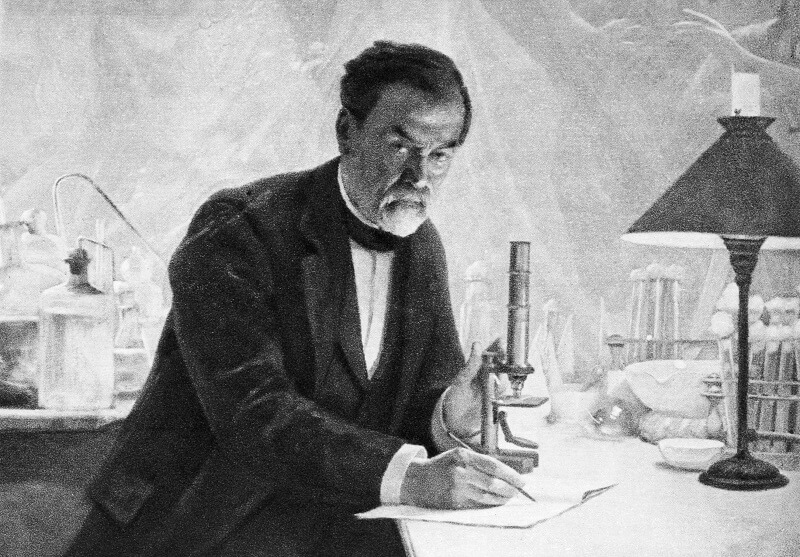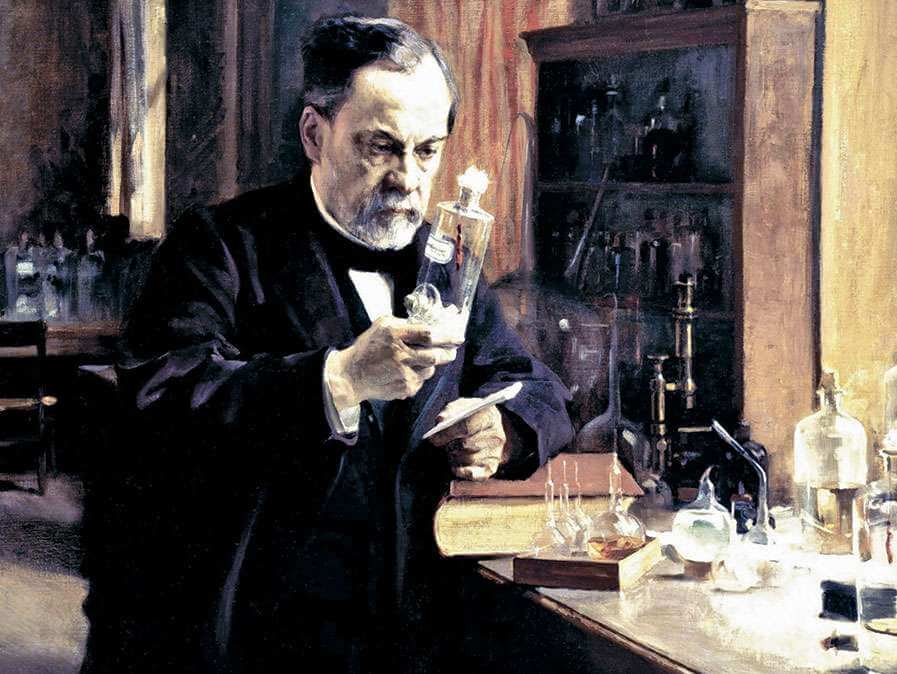Who was Louis Pasteur? What did Louis Pasteur discover? Information about Louis Pasteur biography, life story, works and discoveries.
Louis Pasteur; French chemist and founder of microbiological sciences : b. Dole, Jura, France, Dec. 27, 1822 ; d. Villeneuve l’Étang, Sept. 28, 1895. Having received his scientific education at the École Normale Supérieure in Paris, from which he was graduated in 1847, Pasteur served successively as professor of physics in Dijon (1848-1849), professor of chemistry in Strasbourg (1849-1854), and professor of chemistry and dean of the Lille Faculty of Sciences, which he organized in 1854.

Three years later he returned to the École Normale as director of scientific studies, a post he retained until 1867, when he became professor of chemistry at the Sorbonne. Meanwhile, he also taught science at the École des Beaux-Arts (1863-1868). He was elected to the Académie des Sciences in 1862, to the Académie de Médecine in 1873, and to the Académie Française in 1882, and in 1888 he became the first director of the newly established Pasteur Institute.
Pasteur’s first discoveries were in crystallography.
While a student, he discovered isomerism by separating the two crystalline forms of tartaric acid and showing their opposite effects on polarized light. He further established that isomerism occurs in many other organic substances, and that natural products occur in only one of the two isomeric forms, thus differing from molecules produced by chemical synthesis, which are mixtures of both. Pasteur also recognized that living things exhibit selectivity with regard to their chemical action on isomeric forms, a fact which prepared his mind for studies on fermentation.
In Lille he was approached by an industrialist disturbed because undesirable products often appeared during the fermentation of sugar into alcohol by yeast. The theory in favor at the time was that yeast acted as a chemical catalyst in this fermentation. Pasteur’s earlier observations on the chemical selectivity of living processes led him to guess that yeast was a microscopic organism, and that the conversion of sugar into alcohol was an expression of its living processes. He postulated that the undesirable products in alcoholic fermentation came from microsopic organisms other than yeast that had taken the upper hand. Generalizing his theory, he claimed that each particular type of fermentation was the effect of a specific microorganism, called the germ, acting on a specific type of substance to produce another substance.
In rapid succession he illustrated this revolutionary theory with brilliant studies on the conversion of sugar into lactic acid, butyric acid, or alcohol, of alcohol into acetic acid, and so on. His germ theory of fermentation was first presented in 1857 in a short paper which has become a classic, Memoire sur la f ermentation appelee lactique, in which Pasteur claimed that the different types of microbes could be separated from each other by proper techniques, and could be shown to differ in nutritional requirements and in their susceptibility to antiseptics. He also suggested that just as each type of fermentation was caused by a particular type of germ, so it was with many types of diseases. Thus, the fundamental tenets of the germ theory of fermentation and of disease were clearly stated in this 1857 preliminary paper.
Another early achievement in the biochemical field was Pasteur’s discovery that certain microorganisms derive energy from reactions which do not make use of oxygen. This discovery of anaerobiosis suggested to Pasteur that fermentation is the metabolic equivalent of respiration when life is carried on without oxygen.
Pasteur became preoccupied with the origin of microorganisms.
It was then believed that the low forms of life could originate de novo from organic materials during the souring of milk, the fermentation of grape juice, and the putrefaction of meat—a view that implied the spontaneous generation of microbes. By elegant and dramatic experiments, Pasteur demonstrated that in reality each microbe is derived from a preexisting microbe, and that spontaneous generation does not occur. Spoilage of perishable products could be prevented by destroying the microbes already present in these products and by protecting the sterilized material against subsequent contamination. Pasteur applied this theory to the preservation of beverages and foodstuffs, introducing the technique of heat treatment since called pasteurization.
In 1865 he was asked to study diseases of silkworms that threatened the silk industry. Though ignorant of this field, he established a primitive laboratory in the Cevennes, where the disease was prevalent. Three years of heartbreaking work revealed two diseases in the silkworms, one caused by a parasitic protozoan and the other by faulty nutrition. Pasteur developed techniques for the selection of noninfected worms and urged other steps which led to rapid improvements in silk production. The next phase of his scientific life was inaugurated around 1877 by studies on anthrax. He demonstrated that the disease was caused by a particular bacillus which can survive in the carcass of dead animals and in soil in the form of resistant structures called spores.

Pasteur’s phenomenal contributions to the germ theory of disease can best be presented in three separate categories of endeavor, which, however, were prosecuted simultaneously:
(1) He undertook a crusade for measures designed to prevent or minimize the spread of disease by microbes, thus bringing about changes in hospital practices and inspiring Joseph Lister to develop antiseptic surgery.
(2) He observed that birds which had been infected with old cultures of chicken cholera were resistant to infection with highly virulent cultures. From this he concluded that attenuated forms of microbes could be used for immunization. Shortly thereafter he succeeded in attenuating the virulence of the anthrax bacillus and in a dramatic experiment protected sheep and goats against virulent anthrax. Thus was founded the science of immunity. Pasteur perceived that his discovery explained the protection elicited against smallpox by injection of cowpox material, and for this reason suggested that the attenuated cultures be referred to as vaccines and their use as vaccination.
(3) In 1882 he began to study rabies, which he demonstrated was caused by a transmissible agent so small that it could not be seen under the microscope, thus revealing the world of viruses. He developed techniques to attenuate the virulence of rabbit spinal chord infected with rabies, proved that the material so obtained could be used to vaccinate dogs against the disease, and finally treated human beings who had been bitten by rabid dogs. The work on rabies spread Pasteur’s fame all over the world, and public funds poured in for the creation of the Pasteur Institute.
As a man, Pasteur possessed several characteristics rarely found together in the same individual. His devotion to scientific research was complete and, despite a stroke which partly paralyzed him at the age of 46, he worked with incredible intensity until his health completely failed. He was not only a highly intuitive man, but also a masterly technician. Although he derived problems from industrial or medical questions, he never failed to pursue the large theoretical concepts involved. He worked almost in isolation, but had an immense gift for public debate. While worshiping science, he maintained that there exist spiritual values that transcend scientific approach, a thesis which he defended in a celebrated debate with the philosopher Ernest Renan.